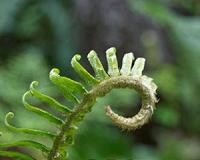| . |  |
. |
Cambridge, MA (SPX) Feb 23, 2011 A team of applied physicists at Harvard's School of Engineering and Applied Sciences (SEAS), Princeton, and Brandeis have demonstrated the formation of semipermeable vesicles from inorganic clay. The research, published online this week in the journal Soft Matter, shows that clay vesicles provide an ideal container for the compartmentalization of complex organic molecules. The authors say the discovery opens the possibility that primitive cells might have formed inside inorganic clay microcompartments. "A lot of work, dating back several decades, explores the role of air bubbles in concentrating molecules and nanoparticles to allow interesting chemistry to occur," says lead author Anand Bala Subramaniam, a doctoral candidate at SEAS. "We have now provided a complete physical mechanism for the transition from a two-phase clay-air bubble system, which precludes any aqueous-phase chemistry, to a single aqueous-phase clay vesicle system," Subramaniam says, "creating a semipermeable vesicle from materials that are readily available in the environment." "Clay-armored bubbles" form naturally when platelike particles of montmorillonite collect on the outer surface of air bubbles under water. When the clay bubbles come into contact with simple organic liquids like ethanol and methanol, which have a lower surface tension than water, the liquid wets the overlapping plates. As the inner surface of the clay shell becomes wet, the disturbed air bubble inside dissolves. The resulting clay vesicle is a strong, spherical shell that creates a physical boundary between the water inside and the water outside. The translucent, cell-like vesicles are robust enough to protect their contents in a dynamic, aquatic environment such as the ocean. Microscopic pores in the vesicle walls create a semipermeable membrane that allows chemical building blocks to enter the "cell," while preventing larger structures from leaving. Scientists have studied montmorillonite, an abundant clay, for hundreds of years, and the mineral is known to serve as a chemical catalyst, encouraging lipids to form membranes and single nucleotides to join into strands of RNA. Because liposomes and RNA would have been essential precursors to primordial life, Subramaniam and his coauthors suggest that the pores in the clay vesicles could do double duty as both selective entry points and catalytic sites. "The conclusion here is that small fatty acid molecules go in and self-assemble into larger structures, and then they can't come out," says principal investigator Howard A. Stone, the Dixon Professor in Mechanical and Aerospace Engineering at Princeton, and a former Harvard faculty member. "If there is a benefit to being protected in a clay vesicle, this is a natural way to favor and select for molecules that can self-organize." Future research will explore the physical interactions between the platelike clay particles, and between the liquids and the clay. The researchers are also interested to see whether these clay vesicles can, indeed, be found in the natural environment today. "Whether clay vesicles played a significant role in the origins of life is of course unknown," says Subramaniam, "but the fact that they are so robust, along with the well-known catalytic properties of clay, suggests that they may have had some part to play." Subramaniam and Stone's coauthors include Jiandi Wan, of Princeton University, and Arvind Gopinath, of Brandeis University.
Share This Article With Planet Earth
Related Links http://www.mrsec.harvard.edu/ http://cbs.fas.harvard.edu/science/core-facilities/lightmicroscopy Life Beyond Earth Lands Beyond Beyond - extra solar planets - news and science
 The Patterns Of Life Are Universal
The Patterns Of Life Are UniversalWashington DC (SPX) Feb 22, 2011 When people on airplanes ask Alan Newell what he works on, he tells them "flower arrangements." He could also say "fingerprints" or "sand ripples" or "how plants grow." "Most patterns you see, including the ones on sand dunes or fish or tigers or leopards or in the laboratory - even the defects in the patterns - have many universal features," said Newell, a Regents' Professor of Math ... read more |
|
| The content herein, unless otherwise known to be public domain, are Copyright 1995-2010 - SpaceDaily. AFP and UPI Wire Stories are copyright Agence France-Presse and United Press International. ESA Portal Reports are copyright European Space Agency. All NASA sourced material is public domain. Additional copyrights may apply in whole or part to other bona fide parties. Advertising does not imply endorsement,agreement or approval of any opinions, statements or information provided by SpaceDaily on any Web page published or hosted by SpaceDaily. Privacy Statement |